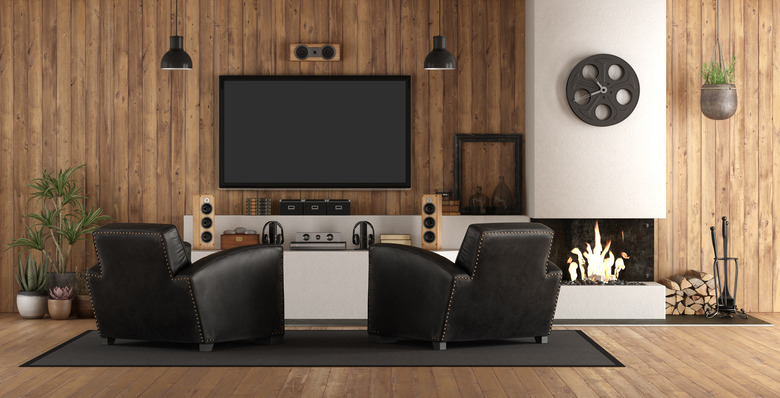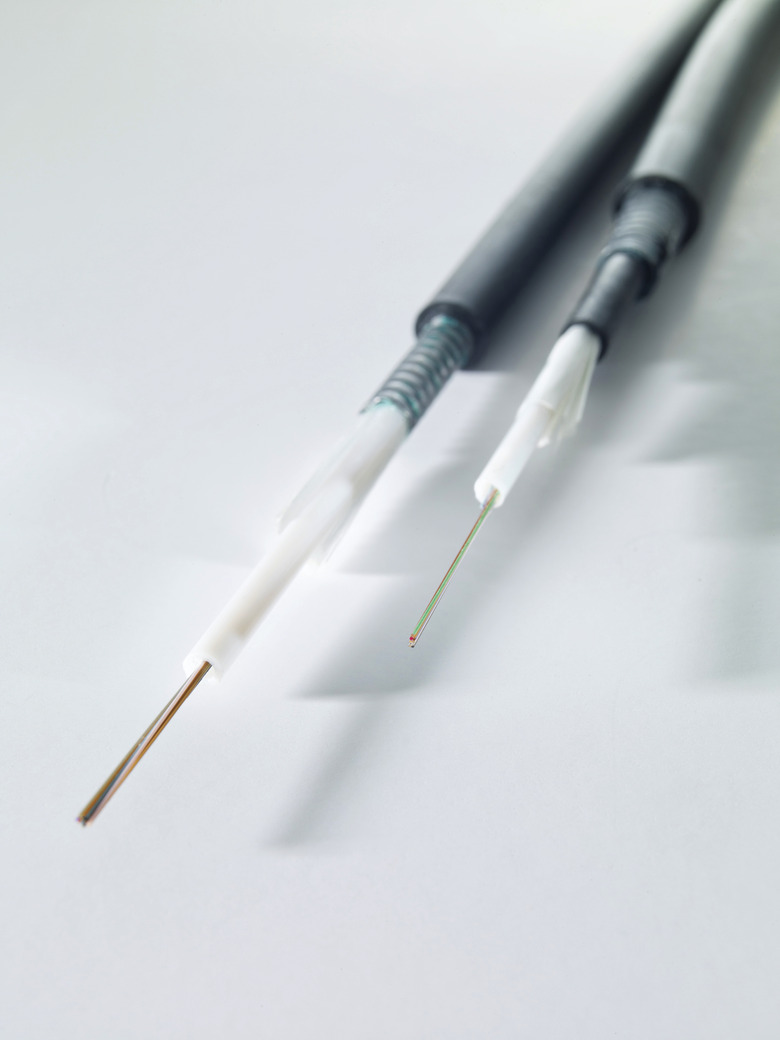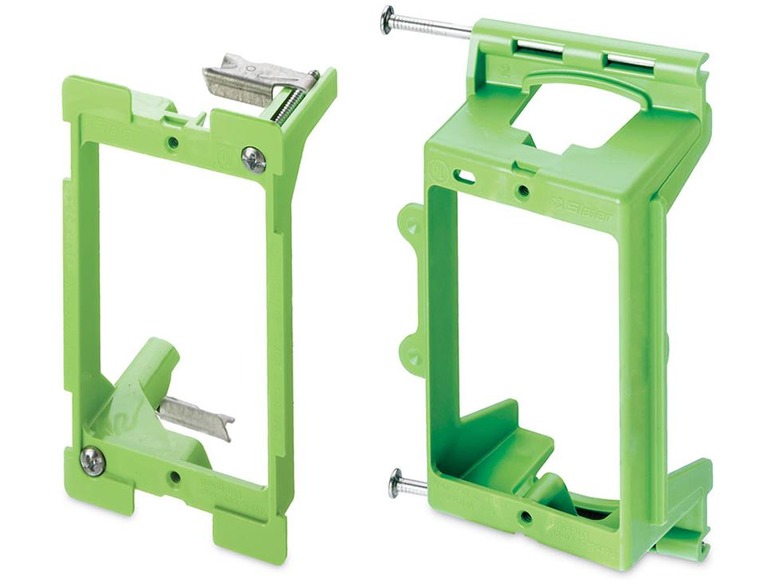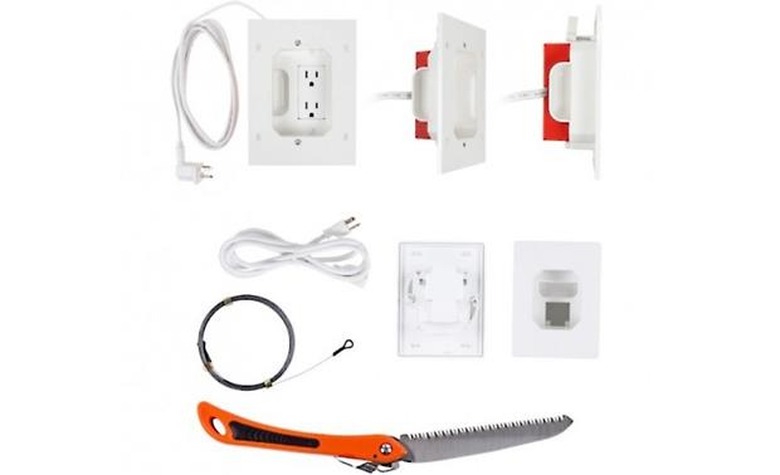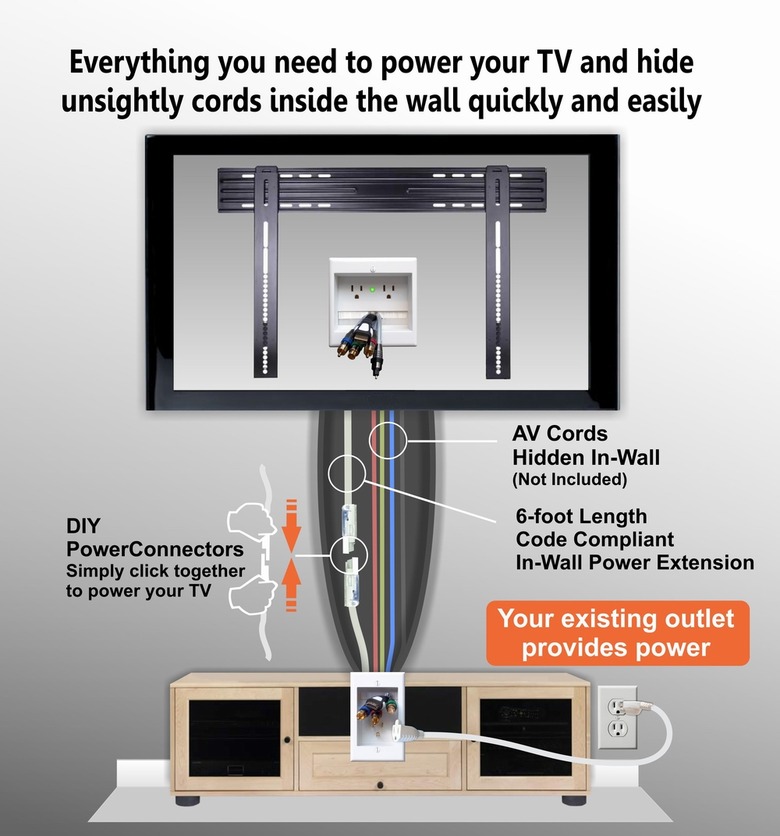How To Run Audio-Visual Cables Through Walls
We may receive a commission on purchases made from links.
As part of the setup for your new entertainment center, you may have to run cables from your TV or other audio-visual equipment to a satellite dish or the service provider's central connection point, which is often on the side of the house. You may be tempted to snake the wires along baseboards or under carpets to hide them, but that could affect the signal quality, and because people can trip on the wires, it isn't very safe. It's better to run the cables through the walls and terminate them with approved wall plates at the point of service.
A/V Cables Are Not Electrical Cables
A/V Cables Are Not Electrical Cables
There are several types of A/V cables, including coaxial, bundled stranded wires for speakers and HDMI (High Definition Multimedia Interface) cables_._ Consult with an A/V specialist if you don't know what type you need. Running A/V cables through the walls is similar to running electrical cables, but there are a few key differences:
- Coaxial cable can't be bent sharply without breaking the internal insulation and ruining the cable. You can wrap it around a 4-inch duct pipe, but not around anything with a smaller diameter.
- Compared to electrical cables, A/V cables carry relatively low electric current. They pose little danger of electrocution, but they can still overheat and start a fire if not properly grounded. The grounding method depends on the type of cable you're running. You may need professional assistance to do it properly.
- You must support A/V cables at 4 1/2-foot intervals, but you can't use the same staples you use for electrical cables. These can crush the cable and ruin the signal quality. Use fasteners designed for the cable you're running.
- It's important to leave 6 to 12 inches of space between A/V cables and electrical cables to prevent inductive signal interference. As a general rule, avoid running an A/V cable parallel to a nearby electrical cable. However, it's fine to run an A/V cable perpendicular to a nearby electrical cable.
Tip
Terminate A/V cables in a low-voltage electrical box. It has the same dimensions as a standard electrical box, but it has no back, This allows you to loop the cable behind the wall rather than stuffing it in the box and kinking it, which ruins the cable.
Running A/V Cables Through New Walls
Running A/V Cables Through New Walls
The best time to run A/V cables through the walls is before the drywall has been hung. You have access to the studs and wall plates at this time, and it's easy to make holes and secure the cable with the proper staples. Here's a general procedure to follow:
1. Plan the Route
This is something you might want to do with an A/V specialist. The goal is to find a route from the point of use to the service connection that is as short as possible to save on cable, but you also want to avoid running A/V cables too close to circuit electrical cables. Measure the distances involved and write them on a materials list.
2. Purchase the Cable and Accessories
You need more than the bare minimum of cable to span the distance. Allow extra to make connections and to clear any obstacles in the way. A good rule of thumb is to buy 10 to 15 percent more cable than you think is necessary. Besides cable, you'll need wall plates, connectors, low-voltage electrical boxes and nail plates for studs in which you make holes.
3. Drill Holes in the Studs and Wall Plates
Use a drill and spade bit to make holes in the studs and other framing members for running the cables. Make a hole in the center of each stud large enough to allow the cables to pass through easily, but never exceed 40 percent of the stud width (which means a maximum diameter of 1 3/8 inches for 2 x 4 framing). Affix a nail plate the front of the stud in front of each hole to prevent drywall fasteners from contacting the cables.
4. Pull the Cables
Feed cables through the holes. Use a fish tape or a fish stick (a rigid pole for pulling wires) when you need to pass them through the wall plates to the floor above or below the one on which you're working. Be sure to leave enough slack on both ends to make connections. Support cables at 4 1/2-inch intervals with appropriate staples or clamps. Install a clamp about 1 foot from each connection point.
Tip
The last step will be to strip or "dress" the cables for connection to a wall plate or other appropriate connector. Wrap plastic around the ends of the cables to protect the wires from moisture until you can get to this step.
Running Cables Behind Existing Walls
Running Cables Behind Existing Walls
You obviously can't drill holes in studs that are already covered with a wall material, so you won't be able run cables laterally in the walls. One solution is to run them behind baseboards, and another is to pass them vertically into the attic or basement and run them laterally from there.
To run cables vertically, go into the attic or basement and drill holes in the wall plates above or below the locations of connection boxes. Cut a hole for each box with a drywall saw or a saw appropriate for the wall material, then feed the wires down from the attic or up from the basement toward each hole, using a fish tape or a fish stick, and have a helper catch them and pull them through. Label both ends of each cable for easy identification before pulling it.
Because a low voltage box doesn't have a back, you can install it after pulling the cable that goes into it. If you use a remodeling box, you can anchor it to the wallboard, then attach the wall plate to it after making the wire connections. It's good to leave a little slack on the cable so it doesn't kink when you push it into the wall and attach the wall plate to the electrical box.
Tip
Don't want to go to the trouble of running cables in the walls? Consider purchasing wireless audio-visual equipment.
Kits for Easy Relocation of AC Power Outlets
Kits for Easy Relocation of AC Power Outlets
Electrical outlets are often located just above the baseboards, making it necessary to run a cord from your wall-mount TV down the wall to plug it in. It would be better if you could move the outlet behind the TV, and with a handy outlet relocation kit, available from A/V equipment suppliers, you can.
The kit comes with faceplates and all the tools you need to run a length of electrical cable behind the wall from a lower outlet to a place above it better suited for plugging in your equipment. You cut holes, using the enclosed jab saw, feed the wires between the old and new outlet, using the enclosed fish tape, then secure the faceplates to the walls with dog-ear fasteners after making the necessary electrical connections. The procedure does require some knowledge of electrical wiring, so you may want to get professional assistance.
Similar kits are available for running the low-voltage A/V cords short distances inside the wall, such as from a wall-mounted flatscreen television to a cable box, DVR unit, or blue-ray player resting in a cabinet near the television. These kits also have faceplates where the cables emerge from the wall to connect to the television and peripheral devices. There are also kits that combine both features, allowing you to extend the electrical outlet and route A/V cables using a single wallplate.
